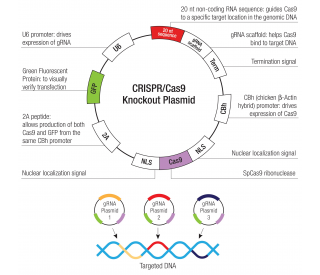Purity
>90%, by SDS-PAGE under reducing conditions and visualized by silver stain
Endotoxin Level
<0.01 EU per 1 μg of the protein by the LAL method.
Activity
Measured by its ability to inhibit FGF acidic-dependent proliferation of NR6R‑3T3 mouse fibroblast cells. The ED 50 for this effect is 1‑3 ng/mL.
Source
Mouse myeloma cell line, NS0-derived
Human FGF R1 beta (IIIc)
(Arg22-Glu285)
Accession # NP_075594IEGRDMD Human IgG1
(Pro100-Lys330)N-terminus C-terminus Accession #
N-terminal Sequence
AnalysisArg22
Structure / Form
Disulfide-linked homodimer
Predicted Molecular Mass
56 kDa (monomer)
SDS-PAGE
90-95 kDa, reducing conditions
661-FR |
| |
Formulation Lyophilized from a 0.2 μm filtered solution in PBS. | ||
Reconstitution Reconstitute at 100 μg/mL in sterile PBS. | ||
Shipping The product is shipped at ambient temperature. Upon receipt, store it immediately at the temperature recommended below. | ||
Stability & Storage: Use a manual defrost freezer and avoid repeated freeze-thaw cycles.
|
Data Images
Bioactivity
| Recombinant Human FGF R1 beta (IIIc) (Catalog # 661-FR) inhibits FGF acidic-dependent cell proliferation of the NR6R‑3T3 mouse fibroblast cell line. The ED50 for this effect is 1-3 ng/mL. |
SDS-PAGE
| 1 μg/lane of Recombinant Human FGF R1 beta (IIIc) was resolved with SDS-PAGE under reducing (R) and non-reducing (NR) conditions and visualized by silver staining, showing bands at 90 kDa and 180 kDa, respectively. |
Background: FGF R1 beta
Fibroblast growth factors (FGFs) comprise a family of at least eighteen structurally related proteins that are involved in a multitude of physiological and pathological cellular processes, including cell growth, differentiation, angiogenesis, wound healing and tumorgenesis. The biological activities of the FGFs are mediated by a family of type I transmembrane tyrosine kinases which undergo dimerization and autophosphorylation after ligand binding. Four distinct genes encoding closely related FGF receptors, FGF R1-4, are known. All four genes for FGF Rs encode proteins with an N-terminal signal peptide, three immunoglobulin (Ig)-like domains, an acid-box region containing a run of acidic residues between the IgI and IgII domains, a transmembrane domain and the split tyrosine-kinase domain. Multiple forms of FGF R1-3 are generated by alternative splicing of the mRNAs. A frequent splicing event involving FGF R1 and 2 results in receptors containing all three Ig domains, referred to as the alpha isoform, or only IgII and IgIII, referred to as the beta isoform. Only the alpha isoform has been identified for FGF R3 and FGF R4. Additional splicing events for FGF R1 - 3, involving the C-terminal half of the IgIII domain encoded by two mutually exclusive alternative exons, generate FGF receptors with alternative IgIII domains (IIIb and IIIc). A IIIa isoform which is a secreted FGF binding protein containing only the N-terminal half of the IgIII domain plus some intron sequences has also been reported for FGF R1. Mutations in FGF R1 - 3 have been found in patients with birth defects involving craniosynostosis. The complex patterns of expression of these receptors as well as the specificity of their interactions with the various FGF ligand family members are under investigation.
References:
Galzie, Z. et al. (1997) Biochem. Cell Biol. 75:669.
Burke, D. et al. (1998) Trends Biochem. Sci. 23:59.
Long Name:
Fibroblast Growth Factor Receptor 1 beta
Entrez Gene IDs:
2260 (Human)
Alternate Names:
FGF R1 beta; FGFR1b










